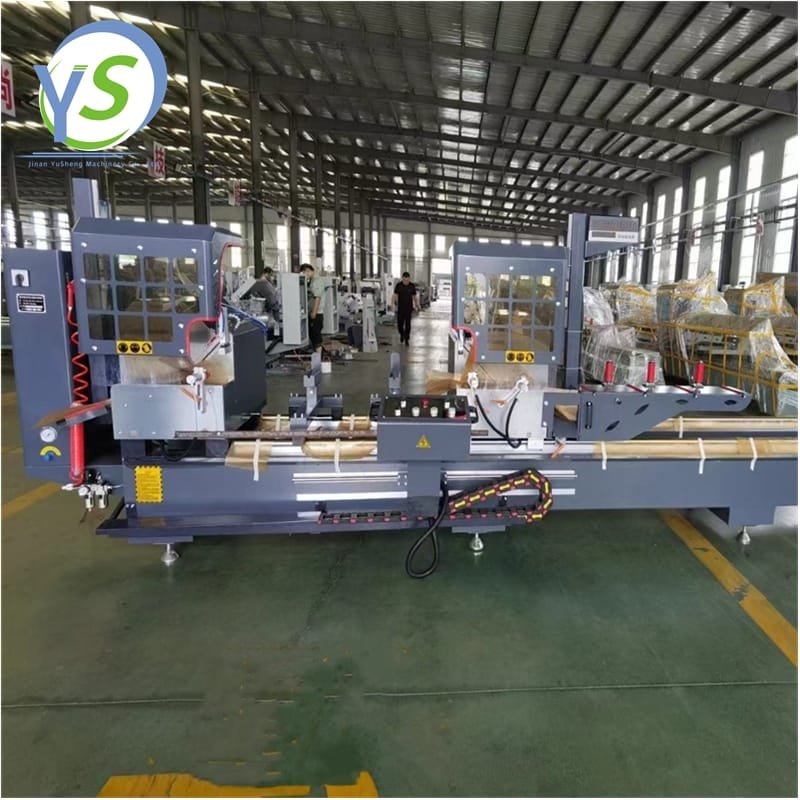Introduction:
In the realm of manufacturing and fabrication, industrial aluminum cutting machines have emerged as pivotal tools, revolutionizing the way aluminum materials are processed. These machines are designed to precision-cut aluminum profiles, sheets, and other forms, catering to a wide array of industries such as aerospace, automotive, construction, and electronics. This article delves into the significance, technological advancements, and operational benefits of industrial aluminum cutting machines.
Significance of Aluminum in Industry:
Aluminum, prized for its lightweight strength, corrosion resistance, and recyclability, is a cornerstone material in numerous industries. Its versatility allows for its use in components ranging from aircraft fuselages to automotive body panels, from building facades to consumer electronics. As such, the demand for efficient and accurate aluminum cutting solutions has never been higher.
Types of Industrial Aluminum Cutting Machines:
- CNC (Computer Numerical Control) Aluminum Cutting Machines: Utilizing advanced software for programming, CNC machines offer unparalleled precision and repeatability in cutting aluminum. They can handle complex shapes and geometries, making them ideal for high-precision applications like aerospace parts.
- Laser Cutting Machines: Laser cutters use a high-powered laser beam to melt, burn, or vaporize aluminum material along a programmed path. These machines offer high speed and accuracy, making them suitable for intricate designs and thin sheet metals.
- Waterjet Cutting Machines: Employing a high-pressure stream of water mixed with abrasives, waterjet cutters can slice through aluminum with minimal heat distortion. This method is particularly advantageous for cutting thick aluminum plates or sensitive materials where heat-affected zones must be minimized.
- Mechanical Shearing and Punching Machines: For large-scale operations, mechanical shearing and punching machines rapidly cut aluminum sheets into specified dimensions or shapes. These machines are robust and suitable for high-volume production runs.
Technological Advancements:
- Automation and Robotics: The integration of robotics and automation in aluminum cutting machines has significantly enhanced productivity and safety. Automated systems can load, position, and cut aluminum with minimal human intervention, reducing errors and downtime.
- Smart Sensors and Monitoring: Advanced sensors and monitoring systems provide real-time feedback on cutting parameters, such as temperature, force, and vibration, enabling operators to make adjustments on-the-fly and ensure optimal cutting performance.
- Software Innovations: CAD/CAM (Computer-Aided Design/Computer-Aided Manufacturing) software has evolved, enabling seamless translation of design intent into precise cutting paths. These software solutions often include simulation tools that predict cutting outcomes, optimizing material usage and reducing waste.
Operational Benefits:
- Precision and Accuracy: Industrial aluminum cutting machines offer high degrees of precision, ensuring that finished products meet stringent quality standards.
- Efficiency and Productivity: Automated processes and advanced cutting technologies significantly speed up production, enhancing overall efficiency and throughput.
- Cost Savings: By minimizing material waste and reducing labor costs, these machines contribute to lower operational expenses. Additionally, the ability to handle complex cuts without additional tooling further reduces costs.
- Versatility: The range of cutting capabilities makes these machines versatile, suitable for a wide variety of aluminum materials and applications.
Conclusion:
Industrial aluminum cutting machines are indispensable in today’s manufacturing landscape, driving innovation and efficiency across multiple industries. With continuous technological advancements, these machines are becoming smarter, faster, and more precise, meeting the evolving needs of the market. As aluminum’s role in various industries continues to expand, so will the importance of sophisticated cutting solutions that harness the full potential of this versatile material. By embracing these advancements, manufacturers can stay ahead of the competition, delivering high-quality products with enhanced performance and efficiency.



